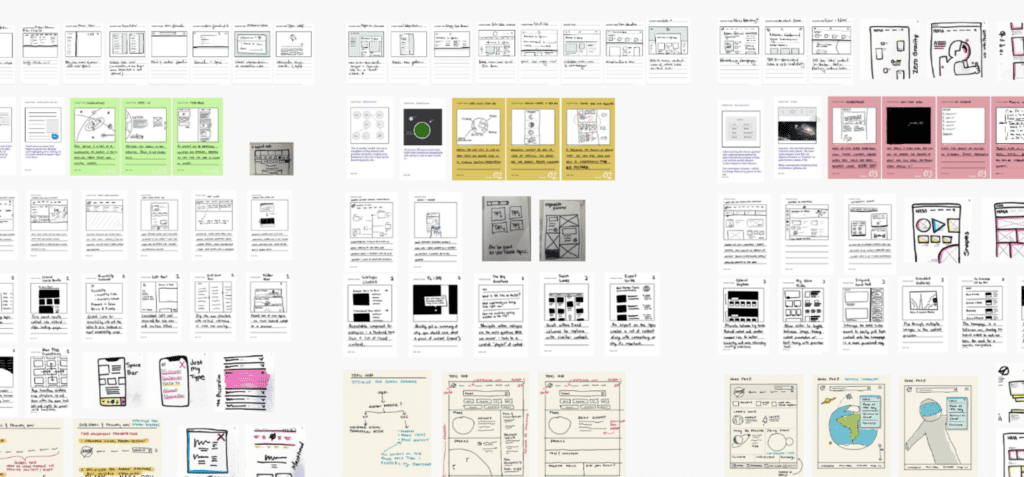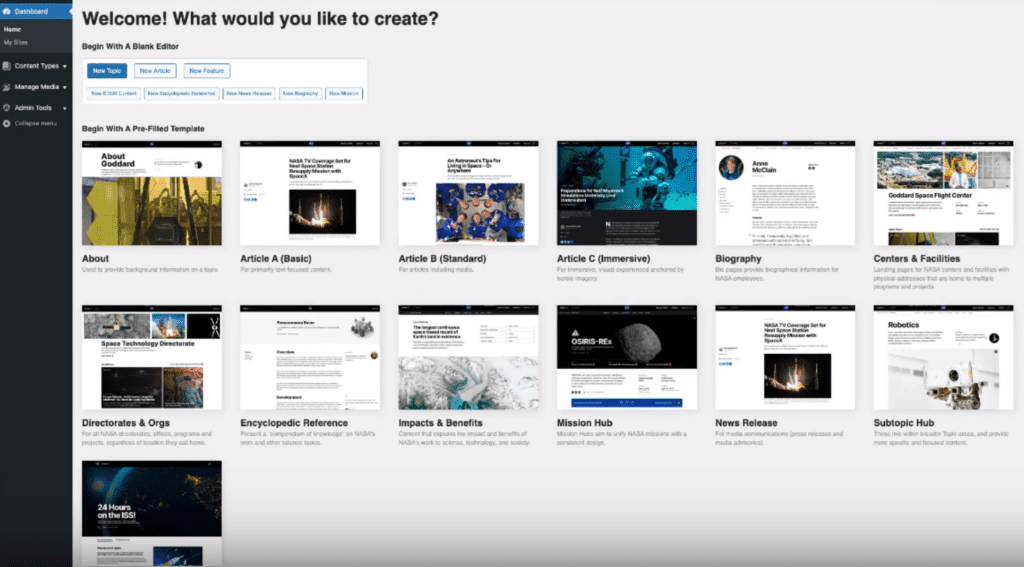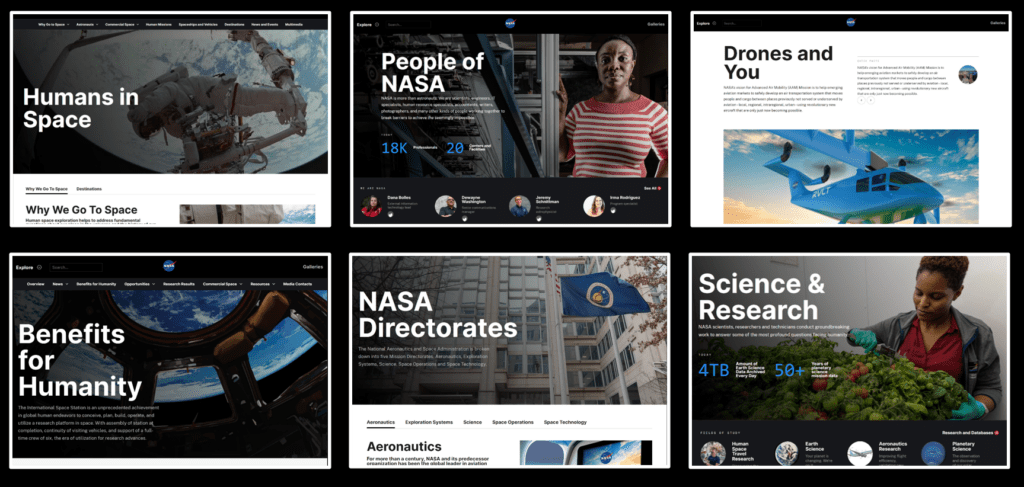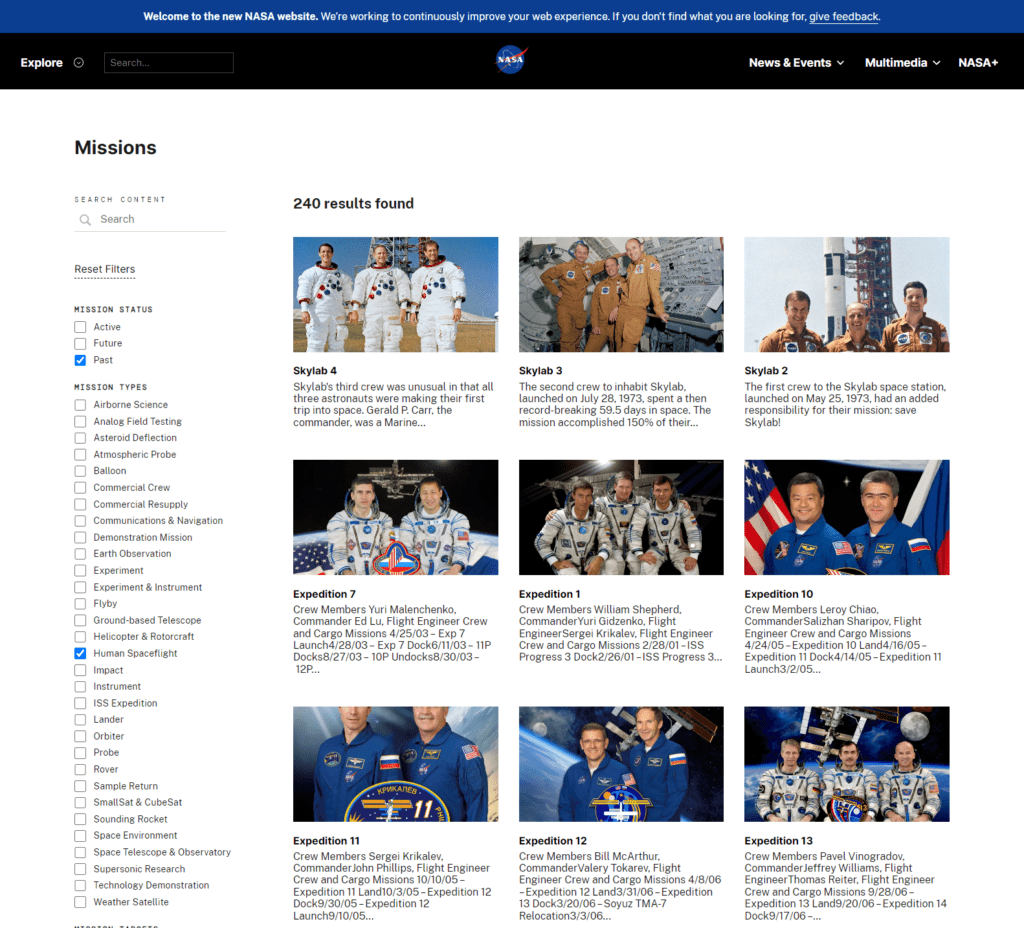NASA’s Flagship Website Launches on WordPress
Last Thursday night, on September 28, Lone Rock Point reached the latest and most critical milestone to date in supporting NASA’s Web Modernization program by launching a new version of NASA’s Flagship website, www.nasa.gov. This is the climax of 18 months of active web development, data migration, and content building. Eighteen months that followed a year of user experience design and evaluating various enterprise content management systems that might meet NASA’s web modernization needs. When this project started, it was far from a foregone conclusion that WordPress would be the future CMS for NASA, but WordPress has indeed replaced Drupal as the CMS for www.nasa.gov. In many way, it’s been a dream project. I’ve daydreamed about what might be a more exciting project than building a WordPress solution to help NASA tell its stories with the world, share what it learns, and inspire humanity. It’s hard to come up something. The closest might be if Paul or Ringo called me and said “We’d like to you to build a historical multimedia archive system for the Beatles on WordPress”
The NASA project was far from your everyday redesign and content migration. That certainly would have made this project much simpler. NASA’s web modernization project is full of ambition – existing not only to present a new user experience but to also improve tooling for content presentation and delivery. The web modernization project exists because NASA has over 1,000 public websites, often publishing the same information and competing with each other for authority.
Over the past year, I’ve found myself saying “It’s the WordPress project that has everything” on numerous occasions when mentioning the NASA project. This post serves as an initial high level overview of some of the components of the NASA Flagship WordPress project. In the following weeks and months, we’ll present future posts that will provide additional details of these and other aspects of the project.
Gutenberg brings NASA’s new design system for the web to life
NASA contracted with Blink UX, a UX research and design company. Blink performed extensive user research and delivered an atomic design system that integrated well with the block based building approach that Gutenberg delivers. This design system is known internally within NASA as the Horizon Design System.



55
That’s the number of custom Gutenberg editor blocks we built to make the design system come alive in WordPress and empower users to tell NASA’s amazing stories with a block based approach. In early requirements gathering phases, CMS users strongly indicated a desire to have a flexible authoring system that allowed them to be creative and break free of templates. The combination of the Horizon Design System and Gutenberg helped make this a reality.
The “Tabbed Content” block shows a lot of our block implementation approaches in one place. Users can reorder tabs via drag-and-drop; edit copy in place; and adjust the focal point of images.

456 Users
That’s the number of users logging into NASA’s WordPress CMS to manage content. User community management was a critical aspect of this project. A team of WordPress power support users led by Lone Rock Point Group Account Director, Stacy Holtz, was the secret sauce in this project.
User training and community management continues to play a critical role in the web modernization project. Though we had created pre-built block patterns to get people started with a click, switching to a completely different CMS is still an overwhelming change. To guide the user community, our team of Web Content Producers started by leading hands-on training and working sessions to build pages in real time alongside our users. Our team also created an online knowledge base called the Website Toolkit that housed step-by-step tutorials on how to use custom blocks, HDS templates, user support resources, FAQs, and more.
We made major modifications to the default admin dashboard to reduce the obstacles to creating new content right away. In addition, users can select to start with a pre-filled template or a blank editor.

To encourage the user community as they learned the new CMS, we created weekly blogs and newsletters that featured screenshots of pages in progress. Seeing their peers’ work and out-of-the-box use of the custom blocks, users were inspired to try different things and ask more questions. Our content team held weekly office hours for managing editors to answer questions users may have, hold live demonstrations, and collect feedback to produce more user resources. By creating an environment that invites discussion, collaboration, and creativity, the content team was able to enforce content quality control standards on a massive scale while delivering a high-quality end-user experience.
68,698 Migrated Pages
That’s the number of pages that were migrated from the previous Drupal CMS via scripting and programmatic tools. Due to the editorial needs of NASA’s newsroom, our migration tooling ultimately ran on a daily basis at the go live date of the new site neared, reducing the need for double CMS entry during the site go live window. The migration also included 104,525 images, videos, and other types of media assets.
3,023 New Landing Pages
Due to the change in the UX design of the new site, automatically migrated pages from Drupal to WordPress primarily consisted of articles and press releases. Topical landing pages needed to be created by the CMS user community with WordPress in time for site launch.

Integrations
Flexing our enterprise muscles, we integrated the WordPress CMS for www.nasa.gov with search.gov, NASA’s own SAML based single sign on system, and extended the WordPress media library to integrate with NASA’s image library.
Additional integrations for www.nasa.gov are in the works. In the near future, NASA’s iOS and Android apps will be updated with versions that rely on the WordPress REST API and data in www.nasa.gov to supply content for the device apps.
Migration to WPVIP
In addition to changing the CMS for www.nasa.gov, we changed infrastructure. Moving the site from an Amazon Web Services environment to WordPress VIP.
The Missions Database
I’ll close by sharing my favorite feature of the new site, the missions database. Users can find all of NASA’s historical, current, and planned missions in one place. WPVIP’s elastic search service delivers the faceting feature that allows the site visitor the capability to filter missions based on various attributes and learn more details.

